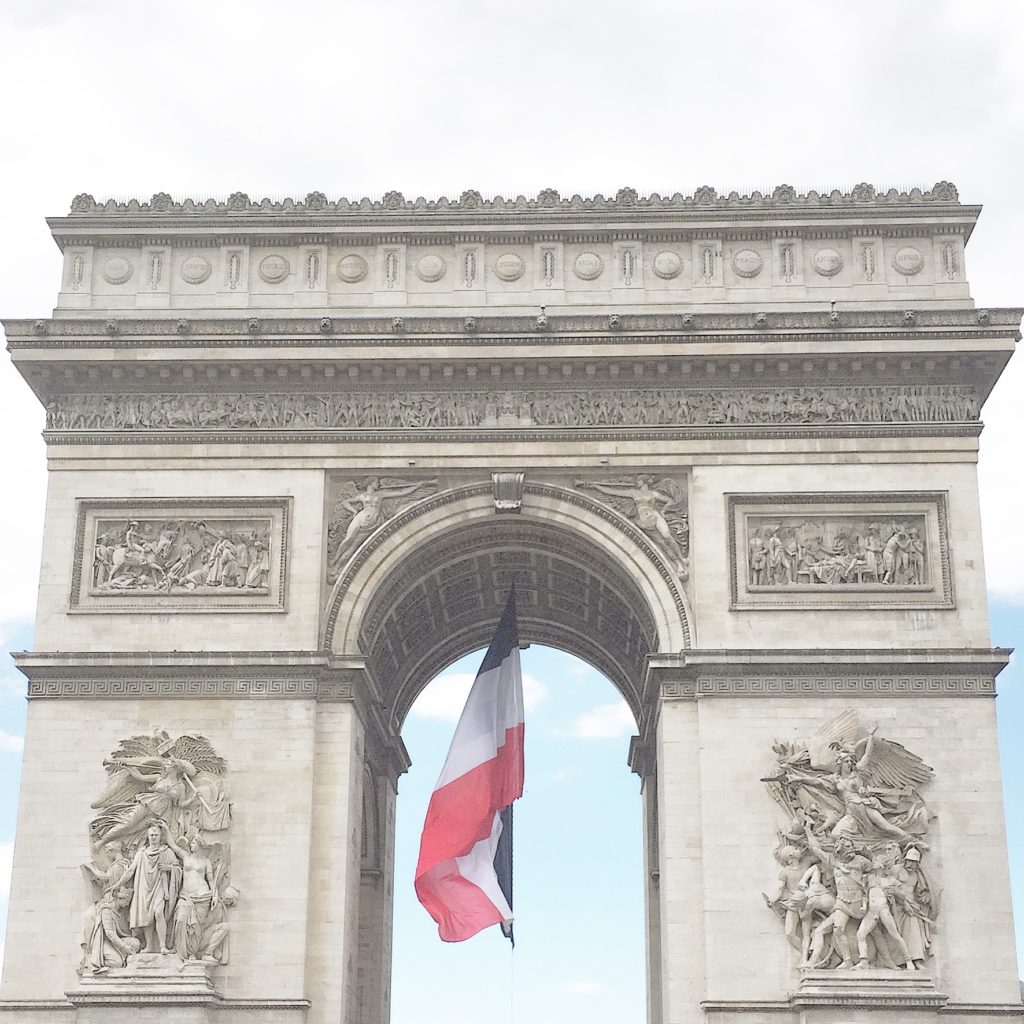
On this day seventy-five years ago, when it had become clear that Germany was losing the war, the French Resistance, along with most of the Paris police force, took control of the préfecture and adjoining buildings. It was the beginning of the Liberation of Paris, one of the most high-stakes and history-making weeks in French memory.
It’s near impossible to get a true sense of the terror that gripped Paris at this time, so serene does the city seem now. But there are occasional signs that stand witness to past brutality.
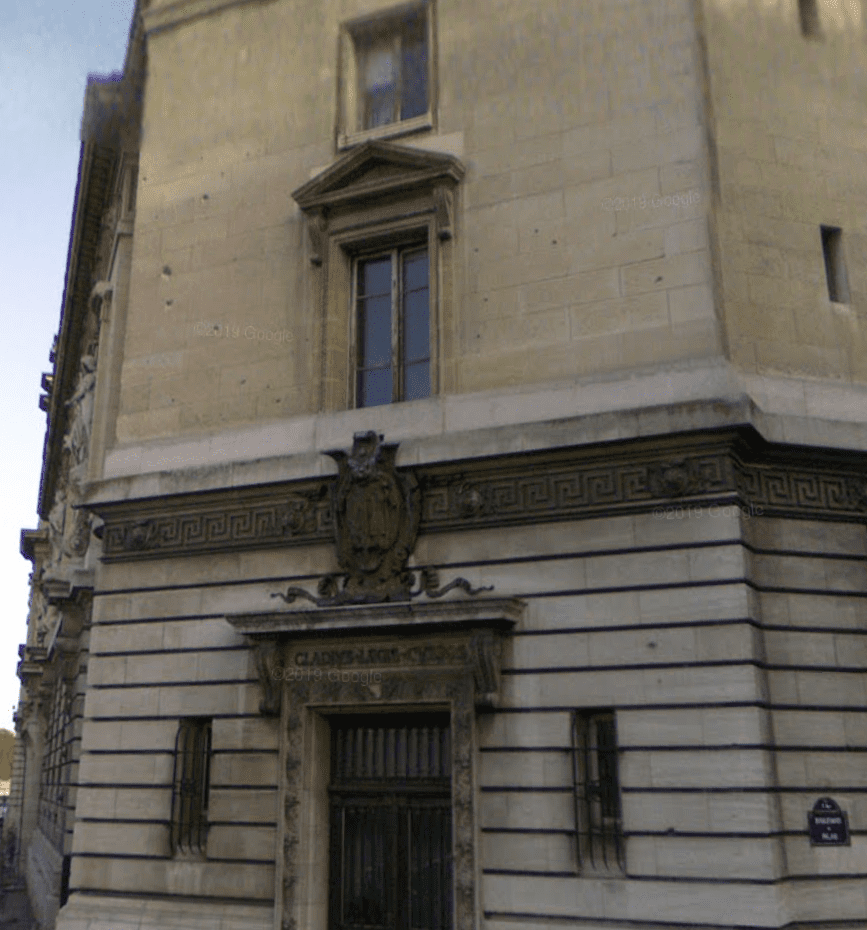
If you look up at the façade of the building at the corner of Quai des Orfèvres and Boulevard du Palais, you’ll see that it has been pockmarked by bullet holes — these date back to 19th August 1944, when German soldiers attempted to wrest back control of the police headquarters.
It was thanks to a series of fortuitous happenings, along with some excessively heroic people, that Paris wasn’t destroyed, despite Hitler’s demand that it be burned to the ground. Many credit the German general Dietrich von Choltitz with saving Paris; he baulked at Hitler’s order, and had a message sent to Allied forces that they had limited time in which to reach the city, before he would have no choice but to detonate the explosives that had been placed beneath Parisian monuments.
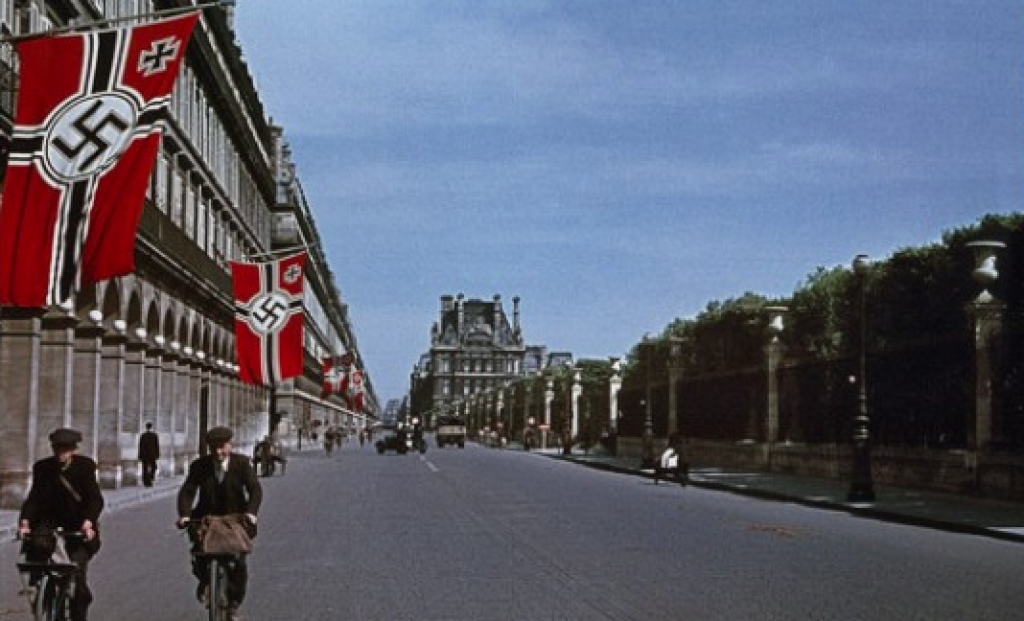
(Let’s not eulogise Von Choltitz too much, however; he had been ruthless in following other orders, which resulted in the deaths of thousands.)
Fortunately the Allies were spurred into action in time, and began reaching the capital late on the 24th, when the church bells soon tolled for the first time since June 1940.
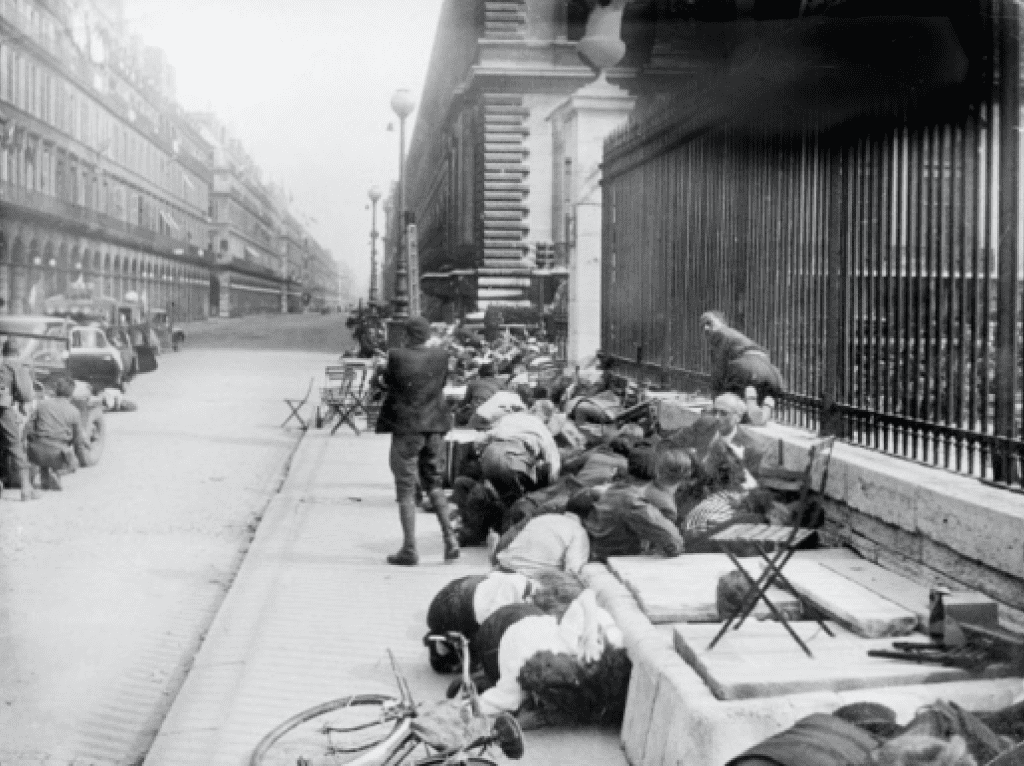
The next day, Von Choltitz, who had been holed up in his office in the Hôtel Le Meurice on Rue de Rivoli, surrendered to General Leclerc, while Charles de Gaulle headed to the Hôtel de Ville where he officially proclaimed the liberation in a spontaneous speech, whose words have become legendary.
‘Paris! Paris outraged! Paris broken! Paris martyred! But Paris liberated!’
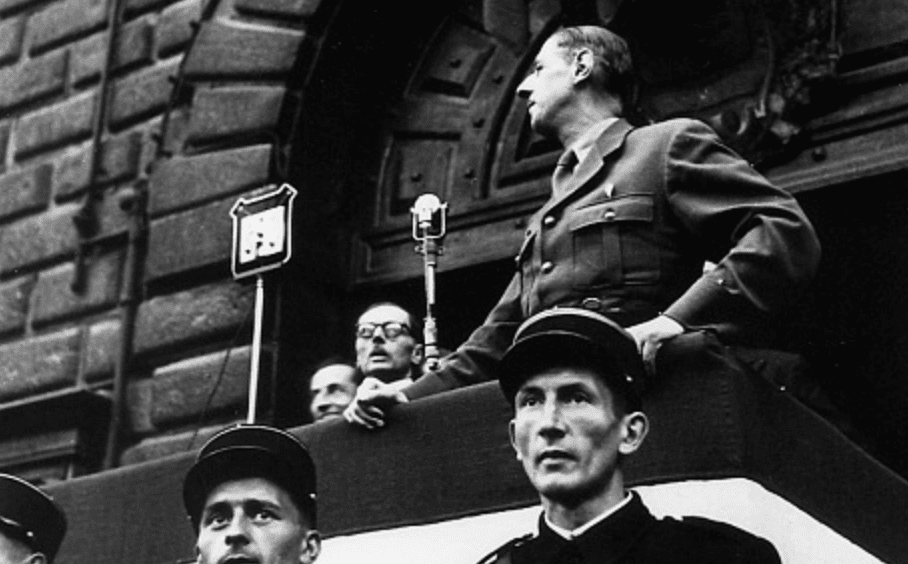
The day saw what has surely gone down in history as Paris’s headiest, happiest street party.
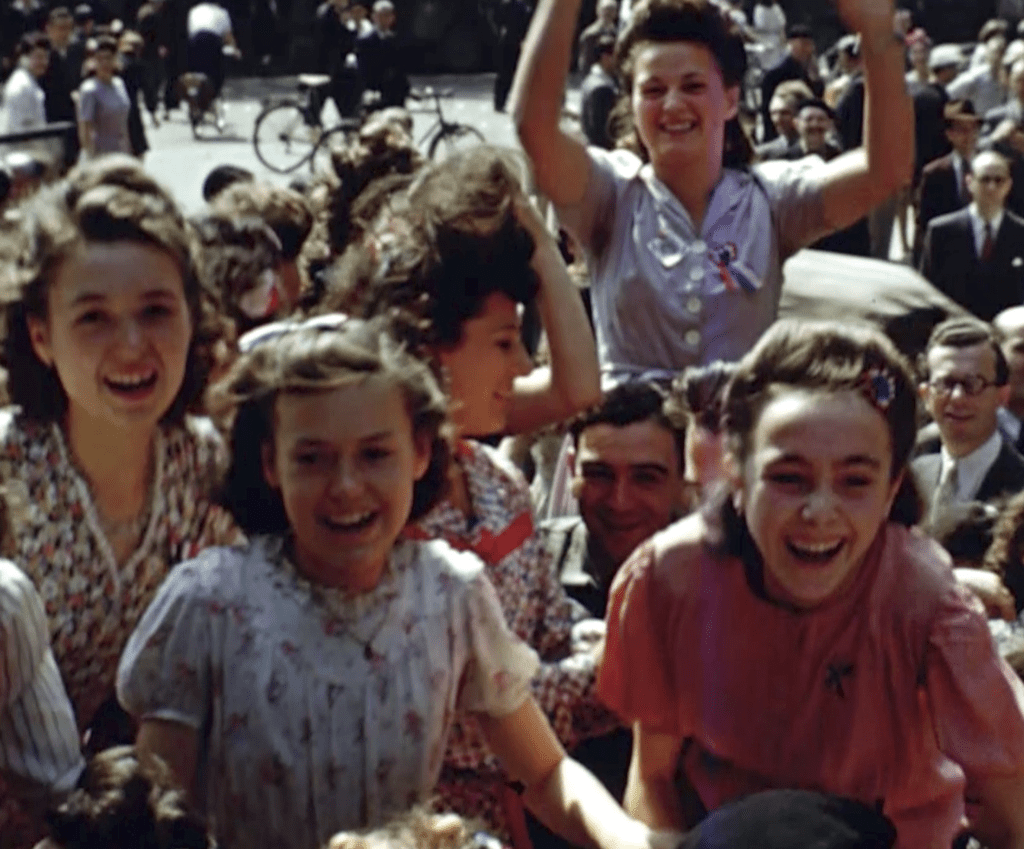
The festivities were still going strong the following day, when a parade of French and Allied soldiers triumphantly marched down the Champs-Élysées, watched by two million ecstatic Parisians.
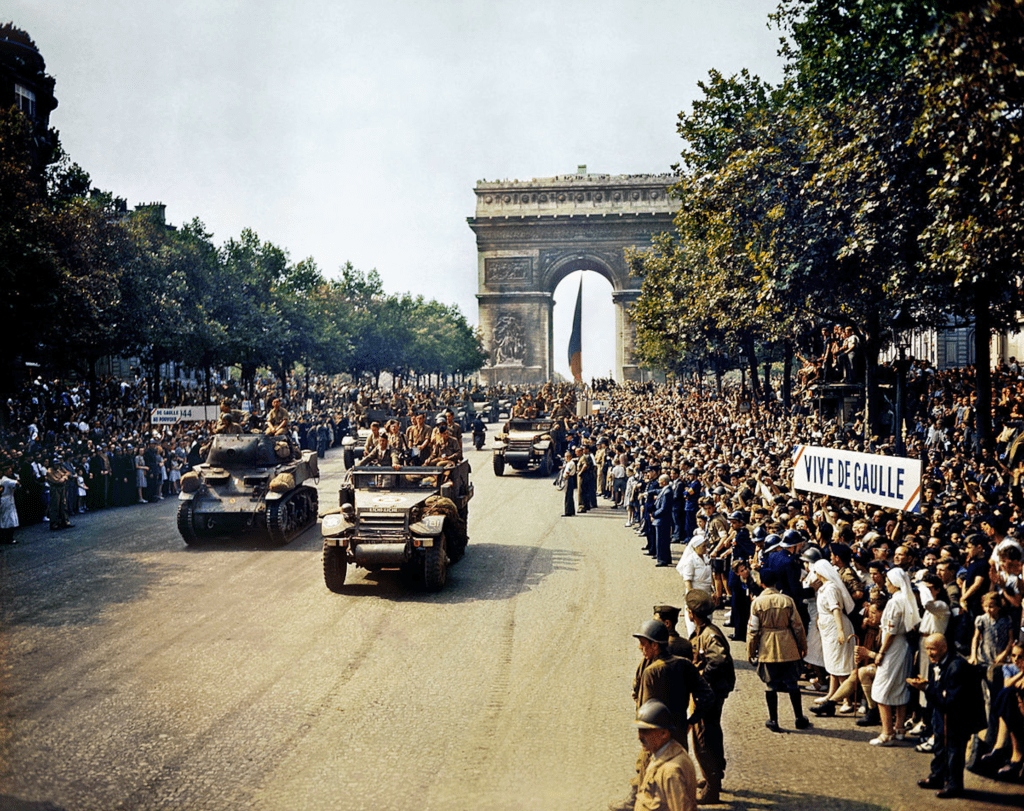
This year, the celebrations will take the form of a Liberty Parade, with Parisians in 1940s dress, jazz musicians and period military vehicles following the fabled steps of General Leclerc’s 2nd Armored Division. Beginning at 3pm at the Place du 25 Août 1944, the procession will head north to Place Denfert-Rochereau, where a new museum, the Musée de la Libération de Paris, is opening its doors.
Here you can peruse an inspired collection of paraphernalia, such as this sweet patriotic post-war dress …
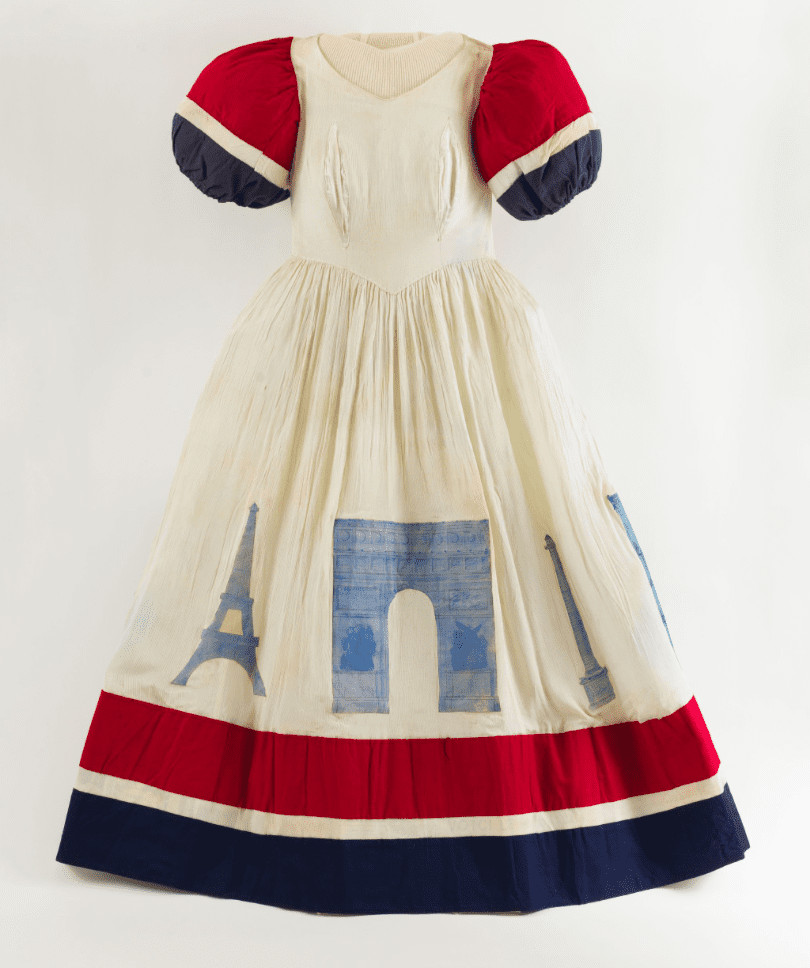
… and visit the underground command post used during the Liberation by Colonel Rol-Tanguy, head of the Resistance group known as the FFI (French Forces of the Interior).
Another way to mark this important anniversary is to head to the Champ de Mars at noon, when a group of firefighters will re-enact the 1944 return of the tricolor flag to the tip of the Eiffel Tower.
And how to best cap off the day? Make like Ernest Hemingway did, and drink a martini (or 73) at the Ritz.
If you’re not in Paris, you can read about Hemingway’s comical mission to liberate the Ritz in the book The Hotel on Place Vendôme by Tilar J. Mazzeo.

Or, to delve into the momentous week in greater detail, check out The Liberation of Paris by Jean Edward Smith.
The 1965 Is Paris Burning? is another vivid account of these historic days, written as a series of sketches based on interviews with numerous people involved; the star-studded 1966 movie version of the book is also highly recommended.
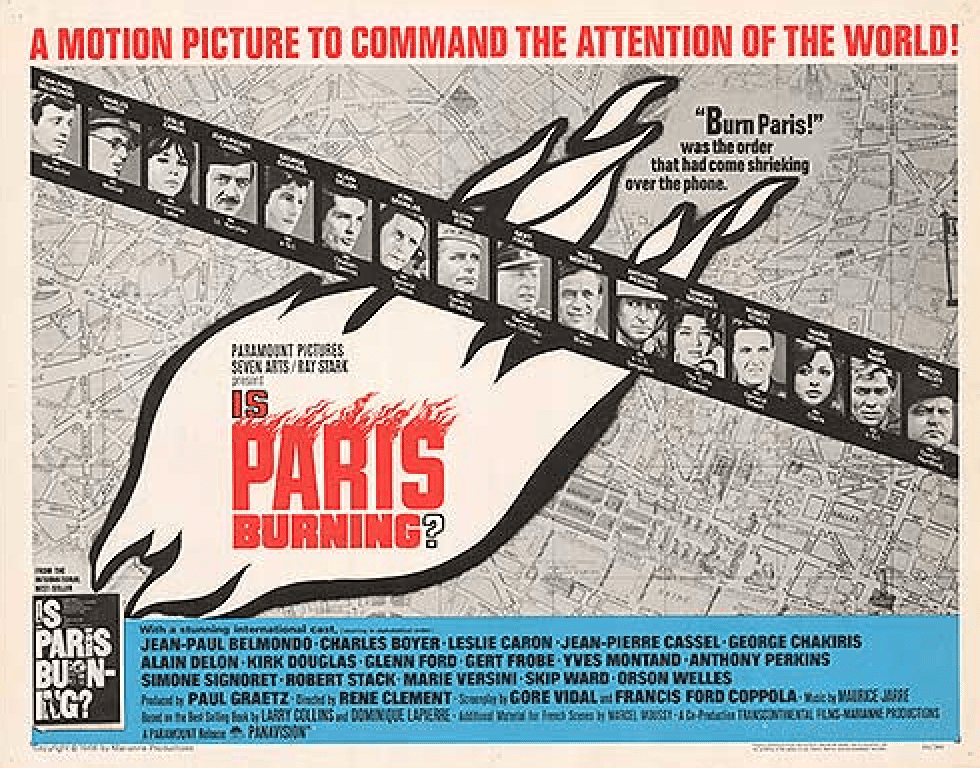
While you have the popcorn out, press play on Diplomacy. The 2014 movie examines the tension in a Le Meurice suite as Swedish ambassador Raoul Nordling employs all of his diplomatic skills to convince Von Choltitz to save Paris. It will give you a spine-chilling awareness of just how close Paris came to ruin.

